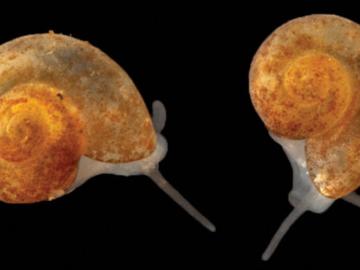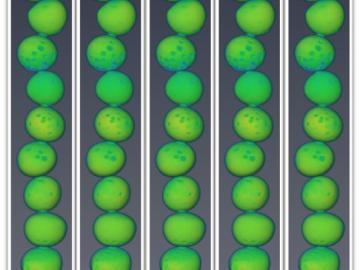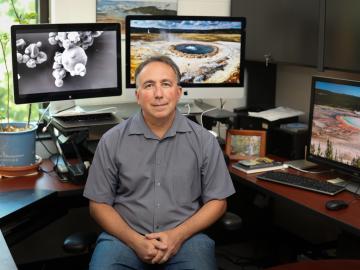
Filter News
Area of Research
- Advanced Manufacturing (3)
- Biological Systems (1)
- Biology and Environment (121)
- Biology and Soft Matter (1)
- Computational Biology (2)
- Computational Engineering (3)
- Computer Science (8)
- Electricity and Smart Grid (1)
- Energy Frontier Research Centers (1)
- Energy Science (153)
- Fuel Cycle Science and Technology (1)
- Functional Materials for Energy (1)
- Fusion and Fission (34)
- Fusion Energy (13)
- Isotope Development and Production (1)
- Isotopes (11)
- Materials (103)
- Materials for Computing (13)
- Mathematics (1)
- National Security (34)
- Neutron Science (43)
- Nuclear Science and Technology (40)
- Nuclear Systems Modeling, Simulation and Validation (2)
- Quantum information Science (1)
- Sensors and Controls (1)
- Supercomputing (121)
- Transportation Systems (2)
News Topics
- (-) Advanced Reactors (40)
- (-) Artificial Intelligence (131)
- (-) Big Data (79)
- (-) Biomedical (73)
- (-) Critical Materials (29)
- (-) Environment (218)
- (-) Frontier (64)
- (-) Nanotechnology (64)
- (-) Nuclear Energy (122)
- (-) Security (31)
- (-) Transportation (103)
- 3-D Printing/Advanced Manufacturing (147)
- Bioenergy (112)
- Biology (128)
- Biotechnology (39)
- Buildings (74)
- Chemical Sciences (86)
- Clean Water (33)
- Composites (35)
- Computer Science (226)
- Coronavirus (48)
- Cybersecurity (35)
- Education (5)
- Element Discovery (1)
- Emergency (4)
- Energy Storage (114)
- Exascale Computing (67)
- Fossil Energy (8)
- Fusion (67)
- Grid (74)
- High-Performance Computing (130)
- Hydropower (12)
- Irradiation (3)
- Isotopes (62)
- ITER (9)
- Machine Learning (68)
- Materials (157)
- Materials Science (158)
- Mathematics (12)
- Mercury (12)
- Microelectronics (4)
- Microscopy (56)
- Molten Salt (10)
- National Security (86)
- Neutron Science (171)
- Partnerships (68)
- Physics (69)
- Polymers (35)
- Quantum Computing (53)
- Quantum Science (93)
- Simulation (65)
- Software (1)
- Space Exploration (26)
- Statistics (4)
- Summit (71)
Media Contacts

Sometimes conducting big science means discovering a species not much larger than a grain of sand.

As a teenager, Kat Royston had a lot of questions. Then an advanced-placement class in physics convinced her all the answers were out there.

Oak Ridge National Laboratory researchers working on neutron imaging capabilities for nuclear materials have developed a process for seeing the inside of uranium particles – without cutting them open.

Mircea Podar, Distinguished Staff Scientist and Leader of the Systems Genetics Group in the Biosciences Division at Oak Ridge National Laboratory, has been elected fellow of the American Academy of Microbiology.

Jitendra Kumar, a researcher at the Department of Energy’s Oak Ridge National Laboratory, has been elevated to the grade of senior member of the Institute of Electrical and Electronics Engineers (IEEE).

A software package, 10 years in the making, that can predict the behavior of nuclear reactors’ cores with stunning accuracy has been licensed commercially for the first time.

A versatile class of flexible, protein-like polymers could significantly advance future drug delivery methods. But first, scientists have to develop a reliable process for tailoring these polymers into shapes that can effectively transport medicines throughout the human body.

The techniques Theodore Biewer and his colleagues are using to measure whether plasma has the right conditions to create fusion have been around awhile.

Researchers at the Department of Energy’s Oak Ridge National Laboratory have used Summit, the world’s most powerful and smartest supercomputer, to identify 77 small-molecule drug compounds that might warrant further study in the fight

Biological membranes, such as the “walls” of most types of living cells, primarily consist of a double layer of lipids, or “lipid bilayer,” that forms the structure, and a variety of embedded and attached proteins with highly specialized functions, including proteins that rapidly and selectively transport ions and molecules in and out of the cell.


